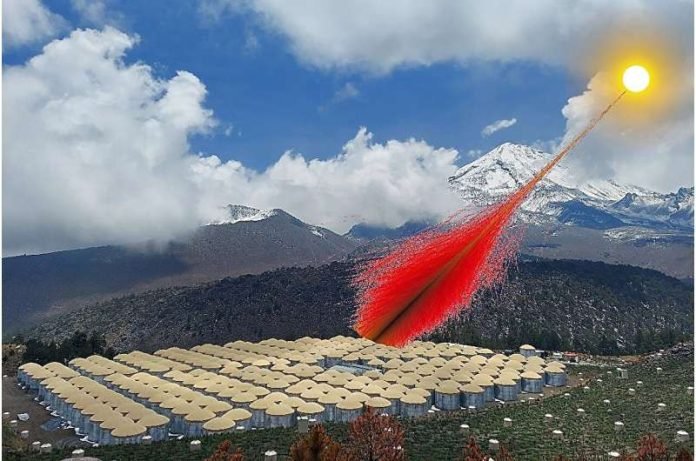
An international team of researchers has reported the detection of the highest-energy light ever observed from the sun, according to a study published in the journal Physical Review Letters.
This gamma radiation, a type of light that was more intense than anticipated, was discovered through the use of the High-Altitude Water Cherenkov Observatory (HAWC).
Unlike other observatories, HAWC operates continuously, allowing it to monitor the sun at all hours. Unlike traditional telescopes, HAWC is a network of 300 large water tanks, nestled between two dormant volcano peaks in Mexico.
The system detects “air showers” resulting from gamma rays striking air in the atmosphere and observes the particles that result from these collisions.
The researchers, led by postdoctoral associate Mehr Un Nisa of Michigan State University, were surprised by the excess of gamma rays they found when analyzing six years’ worth of data.
These rays had about 1 trillion electron volts (1 TeV) of energy, far higher than expected and abundant enough to challenge prior hypotheses about gamma ray generation in the sun.
Previously, it was thought that gamma rays produced by the sun resulted from high-energy cosmic rays colliding with protons in the sun.
The abundance of these rays reaching Earth was assumed to be relatively low, a belief that was disproven by the observations of NASA’s Fermi Gamma-ray Space Telescope in 2011.
Fermi showed that these rays were more energetic and seven times more numerous than expected, with no observed energy cutoff.
This new discovery shows that the sun’s rays extend into the TeV range, up to nearly 10 TeV, which appears to be the maximum, Nisa said.
This finding prompts new questions about how these gamma rays achieve such high energies and what role the sun’s magnetic fields play in this phenomenon.
“This shows that HAWC is adding to our knowledge of our galaxy at the highest energies, and it’s opening up questions about our very own sun,” Nisa said. “It’s making us see things in a different light. Literally.”
The study was published in Physical Review Letters.



